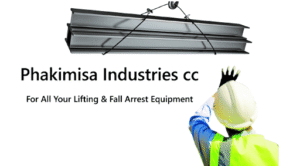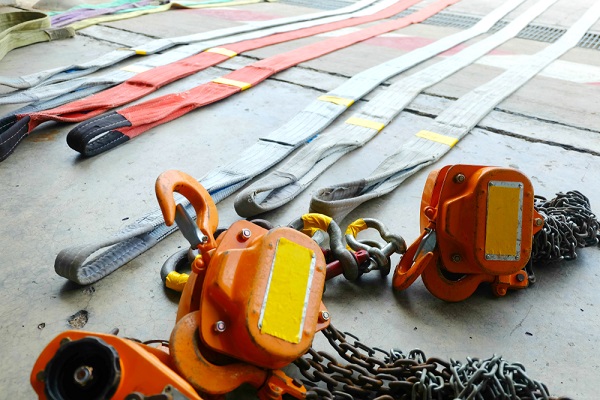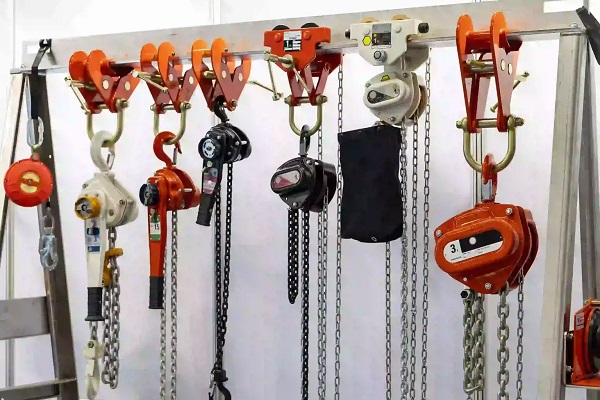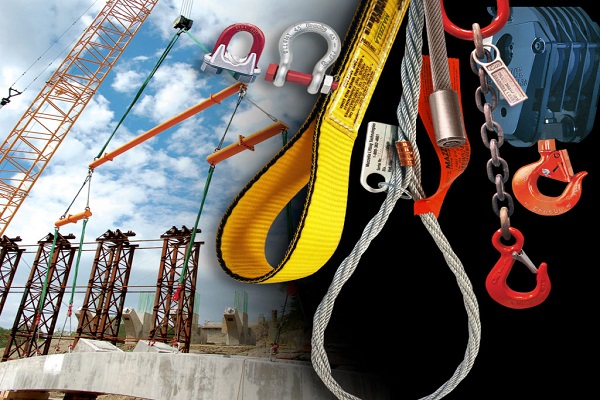Rigging is both the equipment and the process used to lift, suspend, support, tow, or secure a load, typically in conjunction with heavy machinery like cranes or hoists. It’s a critical discipline in construction, manufacturing, transportation, and entertainment, ensuring heavy or awkward objects are moved safely and efficiently. The goal of a rigger is to select the correct components and assemble them in a safe configuration appropriate for the load’s weight, dimensions, and center of gravity.
Key Components of Rigging Equipment
Rigging equipment can be broadly categorized into flexible connecting elements (slings and ropes) and connecting/tensioning hardware. A typical rigging assembly utilizes a combination of these tools.
1. Slings
Slings are the flexible connectors attached directly to the load and then to the lifting machine’s hook. They are designed to support and cradle the load.
 Wire Rope Slings: Made of metal wires twisted into strands and braided around a core. They offer high strength and durability, commonly used in heavy industrial applications.
Wire Rope Slings: Made of metal wires twisted into strands and braided around a core. They offer high strength and durability, commonly used in heavy industrial applications.
 Chain Slings: Composed of high-strength alloy steel chains and end fittings. They are extremely rugged, heat-resistant, and adjustable via shortening clutches, making them ideal for high-temperature or abrasive environments.
Chain Slings: Composed of high-strength alloy steel chains and end fittings. They are extremely rugged, heat-resistant, and adjustable via shortening clutches, making them ideal for high-temperature or abrasive environments.
 Synthetic Slings: Made from materials like polyester, nylon, or aramid fibers (Webbing or Round slings). They are lightweight, flexible, and often used for lifting finished or fragile loads as they are less likely to scratch surfaces.
Synthetic Slings: Made from materials like polyester, nylon, or aramid fibers (Webbing or Round slings). They are lightweight, flexible, and often used for lifting finished or fragile loads as they are less likely to scratch surfaces.
 Mesh Slings: A combination of wire and chain, often used for specific lifting tasks.
Mesh Slings: A combination of wire and chain, often used for specific lifting tasks.
2. Connecting Hardware
This group comprises the fittings that link the slings to the lifting machinery or to other components of the rigging assembly.
 Shackles: U-shaped or bow-shaped metal devices secured with a pin. They are the primary connecting links, used to join slings to hooks, eye bolts, or other components. Common types include Anchor (Bow) shackles (wider crown for multi-leg slings) and Chain (D) shackles (narrower crown).
Shackles: U-shaped or bow-shaped metal devices secured with a pin. They are the primary connecting links, used to join slings to hooks, eye bolts, or other components. Common types include Anchor (Bow) shackles (wider crown for multi-leg slings) and Chain (D) shackles (narrower crown).
 Rigging Hooks: Heavy-duty metal hooks used to connect slings to shackles or to suspend the entire assembly from a crane or hoist. Types include Eye hooks, Swivel hooks (to prevent rope twisting), Self-locking hooks, and Grab hooks (used on chain slings).
Rigging Hooks: Heavy-duty metal hooks used to connect slings to shackles or to suspend the entire assembly from a crane or hoist. Types include Eye hooks, Swivel hooks (to prevent rope twisting), Self-locking hooks, and Grab hooks (used on chain slings).
 Eye Bolts and Eye Nuts: Fasteners with a threaded shank and a ring (the “eye”) at one end, serving as fixed anchor points on the load.
Eye Bolts and Eye Nuts: Fasteners with a threaded shank and a ring (the “eye”) at one end, serving as fixed anchor points on the load.
– Shouldered Eye Bolts: Used for angled (non-vertical) loading.
– Straight Eye Bolts: Used only for vertical, in-line pulls.
– Eye Nuts: Female-threaded nuts with an eye, screwed onto a threaded stud on the load.
 Wire Rope Clips (U-bolt Clamps): Used to form a loop or eye at the end of a wire rope by clamping the free end back onto the main line.
Wire Rope Clips (U-bolt Clamps): Used to form a loop or eye at the end of a wire rope by clamping the free end back onto the main line.
3. Load Handling & Tensioning Equipment
These items help manage the load’s orientation, tension, and stability.
✅ Spreader Bars / Lifting Beams: These devices connect the load to the crane and are positioned below-the-hook.
– Lifting Beams: A horizontal beam that connects directly to the crane at one point and has multiple lower connection points. They are designed to handle bending forces.
– Spreader Bars: Use two chains or slings to connect to the crane, distributing the load over a wider area. They handle compressive forces, making them ideal for loads requiring a wider lift base to prevent crushing.
✅ Turnbuckles: Devices consisting of two threaded components (often an eye bolt and a hook) joined by a frame. They are used to adjust the length or tension on cables, ropes, or chains.
✅ Blocks and Pulleys: Mechanical devices with a sheave (grooved wheel) over which a rope or cable runs. They are used to change the direction of pull and reduce the amount of force required to lift a load through mechanical advantage.
– A system of ropes and blocks is called a tackle.
– Snatch Blocks: Pulleys that can be opened up to install a rope without threading it through the end.
4. Wire Rope Components
These are accessories specifically for use with wire rope.
✅ Thimbles: Metal fittings placed inside the eye of a wire rope loop to protect the rope from wear and deformation, especially when connected to a shackle or hook.
✅ Swivels: Attachments that allow the load or the rigging component to rotate, preventing the wire rope or sling from twisting during the lift.
Safety and Working Load Limits (WLL)
Safety is the paramount concern in all rigging operations. Every piece of rigging equipment has a Working Load Limit (WLL), which is the maximum load it can safely support. Riggers must strictly adhere to the WLL of the weakest component in the assembly and account for factors like the angle of the slings (which increases the tension, or “load,” on each leg).
Key Safety Practices:
✅ Inspection: All equipment must be routinely inspected for wear, damage, deformation, or cracks before each use. Damaged equipment must be immediately removed from service.
✅ Load Calculation: The weight, center of gravity, and dimensions of the load must be accurately determined to select the appropriate equipment and lifting arrangement (hitch).
✅ Proper Hitches: Slings must be attached using approved methods like the Vertical Hitch, Choker Hitch (sling wrapped around the load), or Basket Hitch (sling cradles the load).
✅ Rigging Angle: Using slings at a steeper angle (closer to vertical) is preferred, as a flatter angle dramatically increases the tension (stress) on the sling legs.

 Wire Rope Slings: Made of metal wires twisted into strands and braided around a core. They offer high strength and durability, commonly used in heavy industrial applications.
Wire Rope Slings: Made of metal wires twisted into strands and braided around a core. They offer high strength and durability, commonly used in heavy industrial applications.

